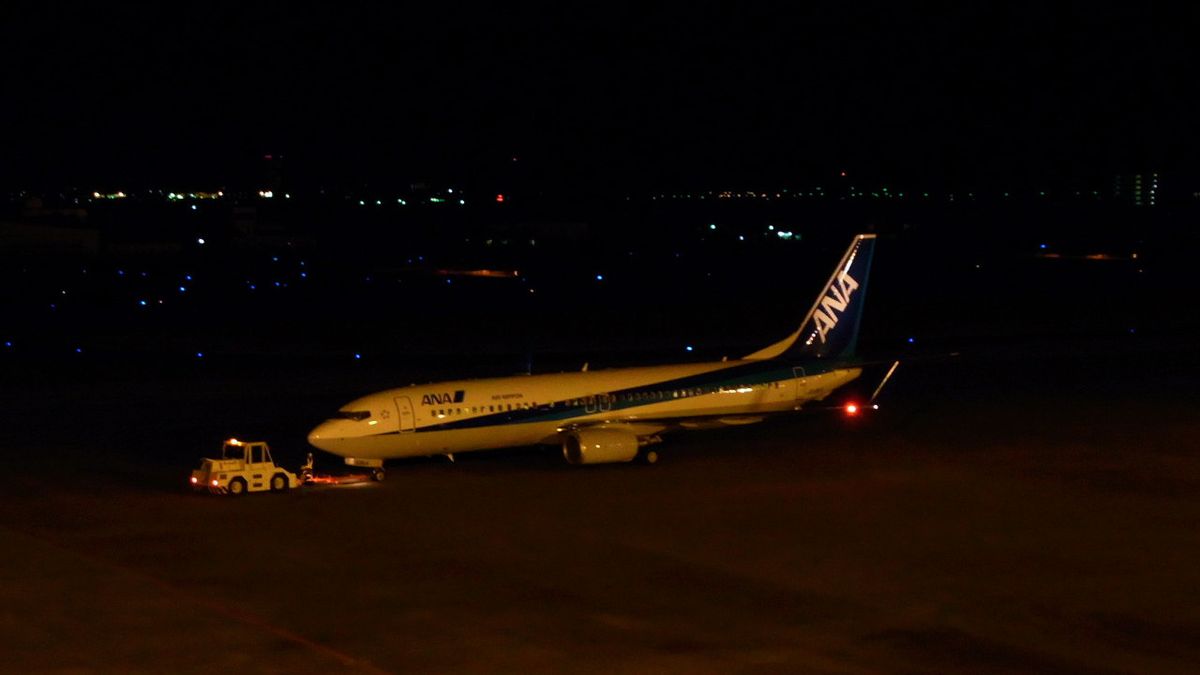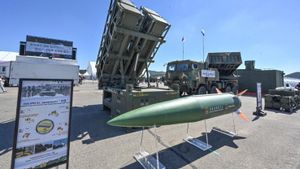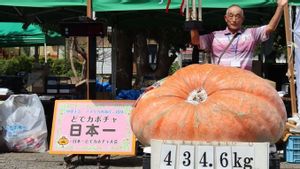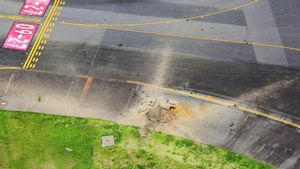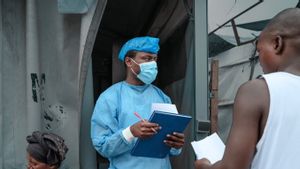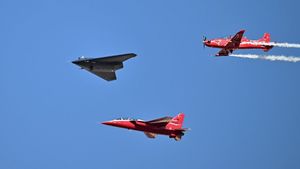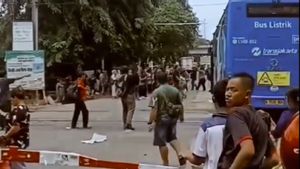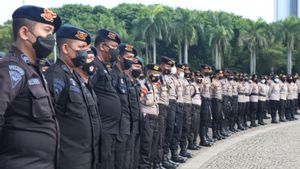JAKARTA - Prior to the bomb explosion left over from World War II that occurred on the edge of the runway at Miyazaki Airport, Japan on Wednesday, a number of bombs were found at the historic airport located in southwest Japan.
Miyazaki Airport was a former air base of the Japanese Empire Navy when World War II broke out.
A number of bomb findings at the airport have occurred before. For example, an unexploded US-made bomb, estimated at one ton, was found during asphalt relaying work on the airport parking apron in June 2021, as quoted by Theploma Shimbun October 3.
In June 2011, a worker who installed a pipe in a green area next to the runway found a 50 kilogram US-made bomb that had not exploded.
In November of the same year, another US-made bomb that had not exploded, weighing 250 kg, was found underground beside the runway during the installation of runway lights.
Although these bombs were successfully removed by the Japan Self-Defense Forces, the runway was closed for up to four hours.
Back and forth again, an unexploded armament was found in a residential area near the airport in January 2009.
According to the airport technology division of the Ministry of Transportation, magnetic inspections were carried out during the construction of runways and taxiways if the location had a history of bombings or if unexploded weapons were found during previous work.
Miyazaki Airport, which was bombed during the war, underwent such inspections. The inspection involved two types of surveys: a horizontal survey, which examined depths of up to two meters; and a vertical survey, which investigated deeper areas within a one meter radius.
During the postwar construction, an unexploded 250 kg bomb was found at the airport. Inspections are carried out to the necessary depth, based on the bomb weight and ground conditions, according to the Ministry of Transportation.
Unexploded bombs found in 2011 and 2021 were detected through magnetic inspections carried out during maintenance work.
Although the unexploded bomb was discovered after construction, no further detailed inspections were carried out, as it was assumed the initial magnetic survey during construction had ensured safety, the division said.
Unexploded bombs pose a risk of explosion if hit by a collision and can also explode spontaneously.
Sotaro Tsuboi, a professor at the Regional Department of Economics at Teikyo University who is very experienced in unexploded weaponry, said, "When I saw the news, I thought it was most likely a bomb that didn't explode, but I was surprised the bomb exploded inside the airport."
Tsuboi said about 1,500 to 2,000 unexploded bombs were found across Japan each year, and although the numbers gradually declined, many still exist.
"The areas that were bombed during the war most likely had weapons that had not exploded," he said.
"We need to build a system to provide public funds for a survey aimed at detecting these bombs first," he added.
Separately, an association specializing in detecting non-explosive weapons said three cases of an unexploded spontaneous bomb explosion had been confirmed in Miyazaki Prefecture in 1975.
Meanwhile, across Japan, there have been about 20 such incidents reported since the end of the war.
In a recent incident, an employee (59) who worked at a waste treatment facility near the airport said he heard a loud "explosion" at around 8 a.m. on October 2 as he was preparing to work.
"I think something hit the glass," he said.
"I didn't think it came from the airport," he added.
He added that it could be a disaster if an explosion occurred on the runway when an airplane flew near him.
"I want the cause investigated," he said.
The damaged taxiway forced the runway to close since morning with a total of 87 flights canceled. According to the office of Miyazaki Airport owned by the Ministry of Transportation, repair work was completed in the crater on the evening of October 2.
Later, the Ministry of Transportation said it would examine Miyazaki Airport in southwest Japan to look for another bomb left over from World War II that has not exploded.
The search came after a bomb exploded on the airport runway, causing dozens of flights to be canceled earlier this week.
"This is something that could affect aviation safety," Transport Minister total Saito told a news conference announcing the move, according to Kyodo News.
The ministry will conduct a magnetic survey around the runway in addition to the runway and airport aprons as early as Monday. The survey will not affect the flight schedule, he said.
The minister added that he had also instructed officials to consider surveys at other airports, including Sendai, Fukuoka and Naha.
SEE ALSO:
It is known that Miyazaki Airport was once an Akae airfield built by the Japanese Imperial Navy in 1943 and was the target of bombing during World War II.
The airport was then opened in 1954 as a training airport for the Civil Aviation College.
That same year, Far East Airlines, now the airline All Nippon Airways Co. (ANA), began operating three weekly flights on the Osaka-Fukuoka-Miyazaki route.
The English, Chinese, Japanese, Arabic, and French versions are automatically generated by the AI. So there may still be inaccuracies in translating, please always see Indonesian as our main language. (system supported by DigitalSiber.id)
